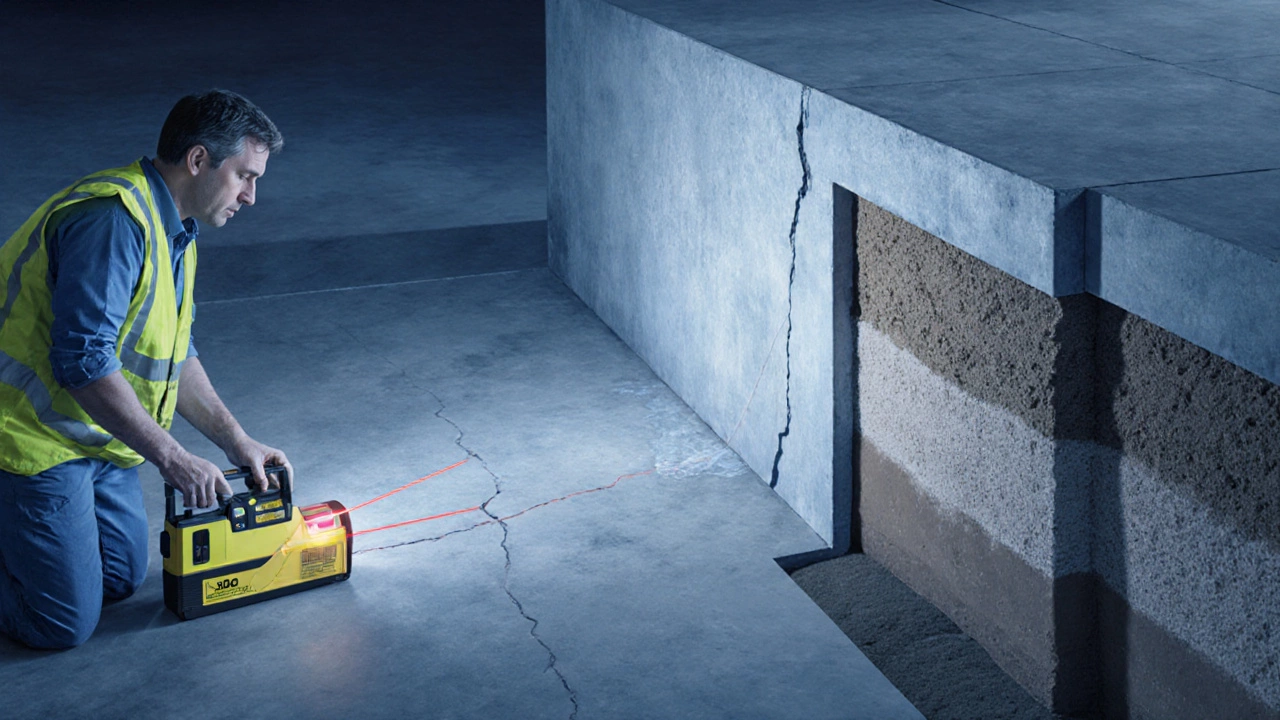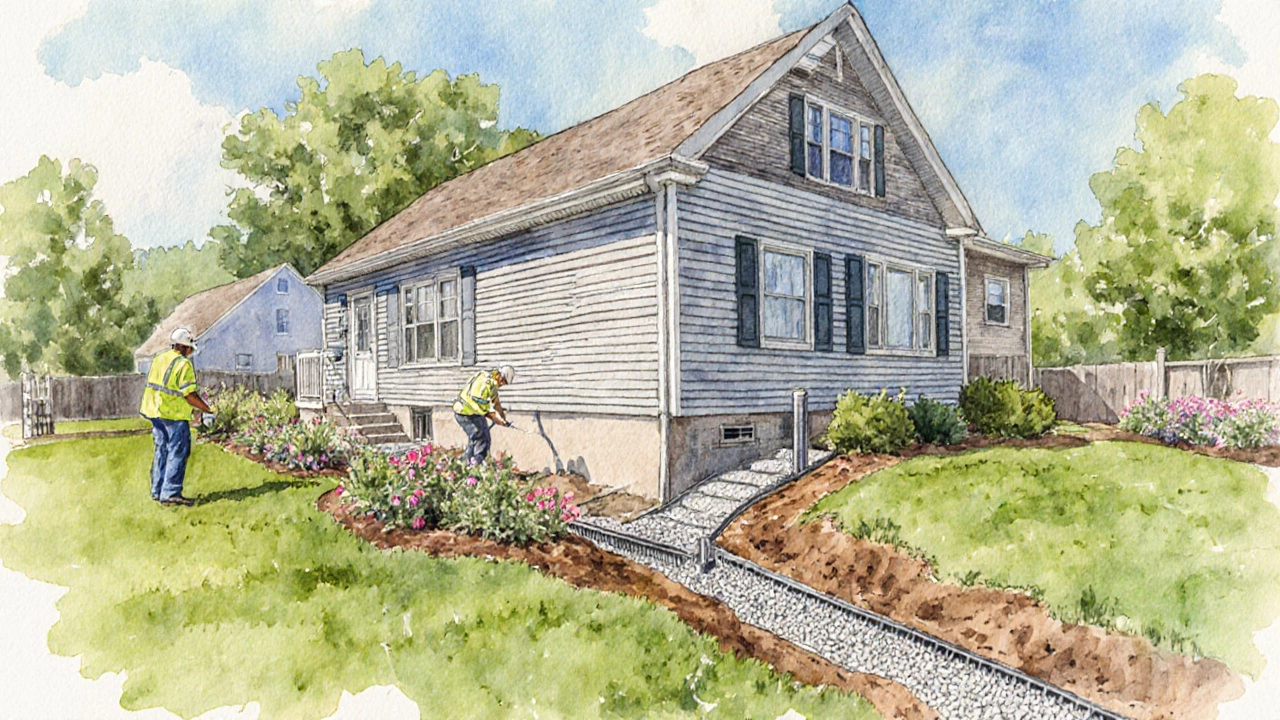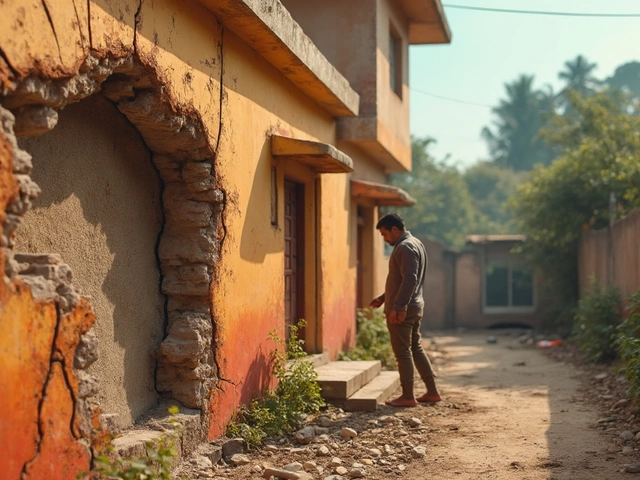Foundation Health Assessment Tool
How Healthy Is Your Foundation?
Answer these questions based on what you've observed in your older home. This tool will help you assess potential foundation issues and determine if you need professional inspection.
Next Steps
Important: This assessment indicates potential foundation issues that require professional evaluation.
- Look for local Structural Engineers licensed in your area
- Request at least 3 quotes for foundation inspection
- Check for professionals with experience in older homes foundation problems
- Ask for references and verify they have experience with your home's foundation type
If you’ve just bought a house that’s thirty, forty, or even sixty years old, you’ve probably wondered whether the foundation is hiding a big surprise. The short answer is: many older homes do show signs of foundation wear, but not every one will need a major fix. This guide walks you through why age matters, what to look for, and how to keep your home solid without breaking the bank.
Quick Takeaways
- Age alone isn’t a death sentence; soil, drainage, and original construction quality matter more.
- Typical issues include settlement, cracks in walls/floors, and uneven doors.
- A professional Foundation Inspection evaluates load‑bearing elements, checks for movement, and recommends repair strategies can spot problems early.
- Prevention - proper grading, moisture control, and regular visual checks - saves thousands in repair costs.
- When you see multiple warning signs, call a Structural Engineer a licensed professional who can design safe corrective measures before a contractor starts work.
What Is a Foundation?
In simple terms, a Foundation is the structural base that transfers a building’s load to the ground. It can be a concrete slab, a crawl‑space footing system, or a pier‑and‑beam arrangement. The foundation’s job is to stay level and stable, resisting soil movement, water pressure, and the weight of everything above it.
Why Older Homes Are Different
An Older Home generally refers to residential properties built before the early 1990s was constructed with the building codes and materials of its time. Older codes allowed less stringent footings, and many homes were built on less‑engineered soils. Over decades, natural shifts in the earth, changes in landscaping, and wear on original materials can create stress that newer houses, built with modern engineering, are less prone to experience.
Common Foundation Issues in Older Homes
| Problem | Primary Cause | Visible Signs |
|---|---|---|
| Settlement | Soil compaction loss or drying shrinkage | Uneven floors, doors that stick, cracks near corners |
| Heave | Expansive clay soils swelling with moisture | Floors rise, windows become misaligned |
| Footing cracks | Age‑related concrete fatigue or water intrusion | Visible cracks in basement walls, mortar crumbling |
| Moisture intrusion | Poor drainage, high water table | Mold, musty odors, efflorescence on walls |
| Pier failure (pier‑and‑beam homes) | Corroded steel, rotting wood posts | Floor sagging, sagging ceilings, uneven joists |

Warning Signs You Shouldn't Ignore
- Cracks that are wider than 1/4 inch or that form a stair‑step pattern.
- Doors and windows that no longer close flush.
- Gaps between walls and ceilings that gradually widen.
- Visible water pooling around the foundation after rain.
- Uneven or sloping floors, especially in basements and crawl spaces.
How a Professional Foundation Inspection Works
A qualified inspector starts by measuring level differences with laser levels or digital inclinometers. They then check the Soil Type such as clay, sand, or loam, which influences movement potential and evaluate drainage, grading, and existing cracks. The report typically includes:
- Photographic evidence of problem areas.
- Exact measurements of settlement or heave.
- Recommendations for repair methods (e.g., underpinning, slab jacking).
- Estimated cost ranges based on local market data.
Even if you don’t see obvious damage, a proactive older homes foundation problems inspection can save you from surprise repair bills later.
Factors That Increase Foundation Risk
Not every old house will develop problems. These risk enhancers make it more likely:
- Footings are the concrete pads that spread the load of the walls that were poured shallow or without reinforcement.
- Pier and Beam systems rely on wood or steel piers that can rot or corrode over time.
- Slab‑on‑Grade foundations are directly poured on the ground and can crack if the soil shifts.
- Improper Crawl Space ventilation problems cause moisture buildup, leading to wood rot and soil movement.
- Long‑term exposure to Moisture Intrusion from leaking gutters, downspouts, or high water tables.
- Historical construction methods that used inadequate concrete mixes or left rebar exposed.

Common Repair Strategies
When a problem is confirmed, there are several proven fix‑its:
- Underpinning - extending footings deeper or adding new supports to bear the load. This is often the go‑to for severe settlement.
- Slab Jacking - pumping a cementitious grout beneath a sunken slab to raise it back to level.
- Pier Replacement - swapping out corroded steel or rotted wood piers with pressure‑treated or steel alternatives.
- Drainage Improvements - installing French drains, fixing downspouts, and re‑grading the lawn to direct water away from the house.
- Moisture Barriers - adding vapor barriers in crawl spaces and sealing foundation cracks with epoxy.
Each method has a price range. Underpinning can run $8,000-$30,000, while slab jacking often stays under $5,000 for a typical single‑family home.
Cost, Timeline, and Choosing the Right Contractor
Typical repair timelines range from a few days (for slab jacking) to several weeks (for full underpinning). When budgeting, consider:
- Inspection fees ($300-$600).
- Engineering design (if required) - $500-$1,200.
- Permits - varies by municipality; Auckland often requires a building consent for major underpinning.
- Labor and material costs - get at least three quotes.
A reputable contractor will be licensed, carry insurance, and be willing to show past project photos. Ask for references and verify they have experience with the specific foundation type of your home.
Preventive Maintenance Tips
- Keep the ground sloping away from the house at a minimum 5% grade.
- Maintain gutters and downspouts; clear them at least twice a year.
- Install a sump pump if the basement sits below the water table.
- Inspect and seal any minor cracks immediately to prevent water seepage.
- Schedule a professional foundation check every 5 years for homes over 40 years old.
Frequently Asked Questions
Do all homes built before 1990 have foundation issues?
No. While older construction can be more vulnerable, many houses remain sound if they sit on stable soil, have proper drainage, and have been maintained.
How often should I have a foundation inspection?
For a house older than 30 years, a professional check every 5 years is wise. If you notice any warning signs, schedule one immediately.
Can I fix small foundation cracks myself?
Small surface cracks (under ¼ inch) can be sealed with epoxy or polyurethane fillers. Larger structural cracks need a professional assessment.
What’s the difference between settlement and heave?
Settlement is a downward movement caused by soil compression or drying. Heave is upward movement, usually from expansive clay swelling when wet.
Do insurance policies cover foundation repairs?
Standard home insurance typically excludes foundation work unless it results from a sudden covered peril (e.g., burst pipe). You may need a separate foundation warranty.
Bottom line: older homes are more likely to show foundation wear, but with the right inspection, maintenance, and timely repairs, you can protect your investment and keep the house safe for decades to come.



Write a comment